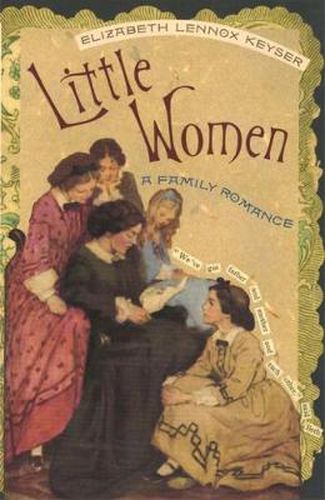Readings Newsletter
Become a Readings Member to make your shopping experience even easier.
Sign in or sign up for free!
You’re not far away from qualifying for FREE standard shipping within Australia
You’ve qualified for FREE standard shipping within Australia
The cart is loading…






It is no secret that Louisa May Alcott
rewrote
not only herself but also her mother, father and sisters in
Little Women . Yet how well do we grasp the significance of her impulse? This study focuses on Alcott’s personal and creative motivations in fashioning an idealized family in her novel and gives us new ways to view both the fictional Marches and the real-world Alcotts. Drawing on Freud’s essay
Family Romances
and his related work on children’s daydreams and fantasies, the author reads
Little Women
in terms of the burgeoning hostility and longing eroticism and ambition each March child experiences as she matures and begins to look beyond her parents for a new primary love. Keyser also reads
Little Women
in the context of the torrid sensational stories aimed at lower class readers (which Alcott also wrote) that we commonly equate with the term
romance , as well as the sophisticated psychological romantic ideals associated with the novels of Nathaniel Hawthorne (whom Alcott knew and read). Readers have long regarded
Little Women
as Jo March’s story. The insights offered here nudge us toward viewing the novel as the story of the entire March family, a more satisfying inclusive view for, as Keyser writes,
the relationships among the March sisters and their mother are more compelling than the development of any one character, not excluding Jo .
$9.00 standard shipping within Australia
FREE standard shipping within Australia for orders over $100.00
Express & International shipping calculated at checkout
It is no secret that Louisa May Alcott
rewrote
not only herself but also her mother, father and sisters in
Little Women . Yet how well do we grasp the significance of her impulse? This study focuses on Alcott’s personal and creative motivations in fashioning an idealized family in her novel and gives us new ways to view both the fictional Marches and the real-world Alcotts. Drawing on Freud’s essay
Family Romances
and his related work on children’s daydreams and fantasies, the author reads
Little Women
in terms of the burgeoning hostility and longing eroticism and ambition each March child experiences as she matures and begins to look beyond her parents for a new primary love. Keyser also reads
Little Women
in the context of the torrid sensational stories aimed at lower class readers (which Alcott also wrote) that we commonly equate with the term
romance , as well as the sophisticated psychological romantic ideals associated with the novels of Nathaniel Hawthorne (whom Alcott knew and read). Readers have long regarded
Little Women
as Jo March’s story. The insights offered here nudge us toward viewing the novel as the story of the entire March family, a more satisfying inclusive view for, as Keyser writes,
the relationships among the March sisters and their mother are more compelling than the development of any one character, not excluding Jo .